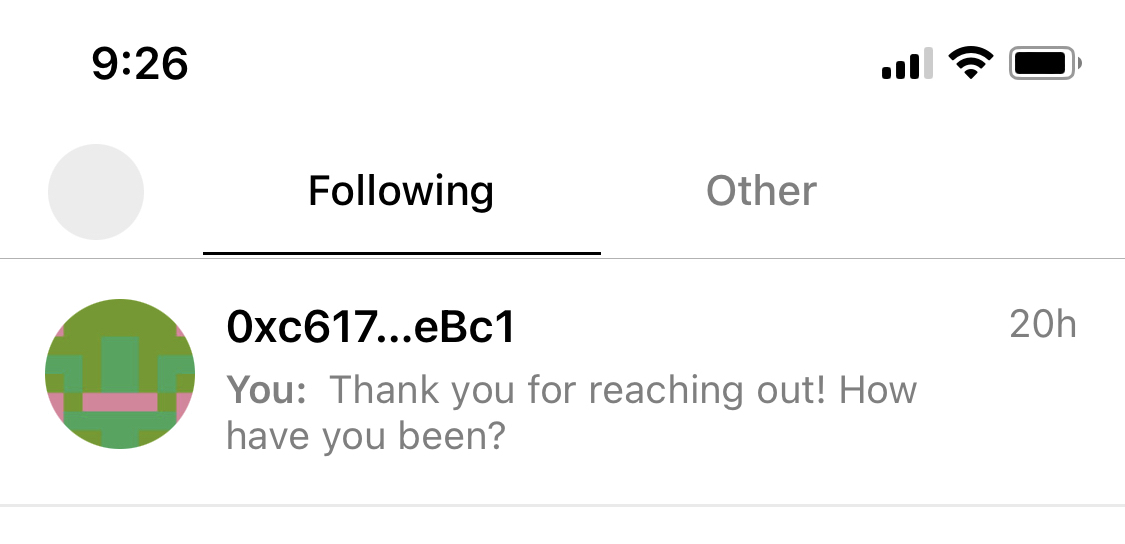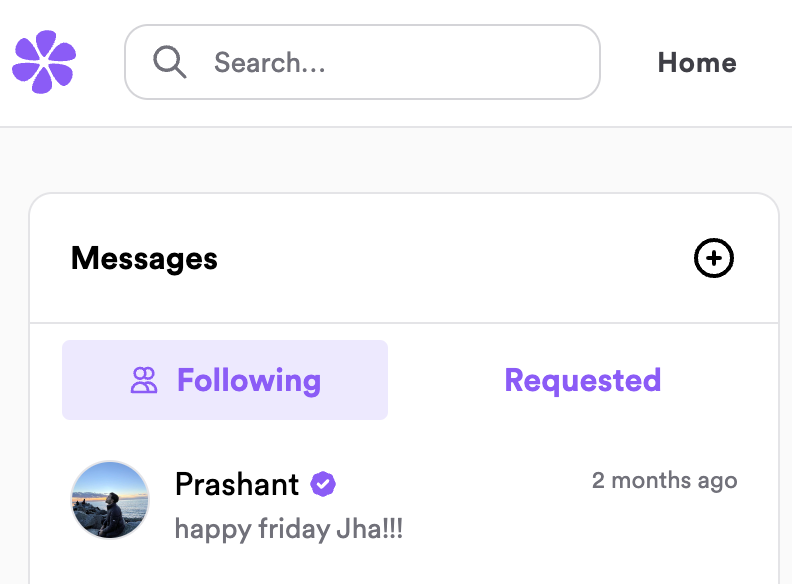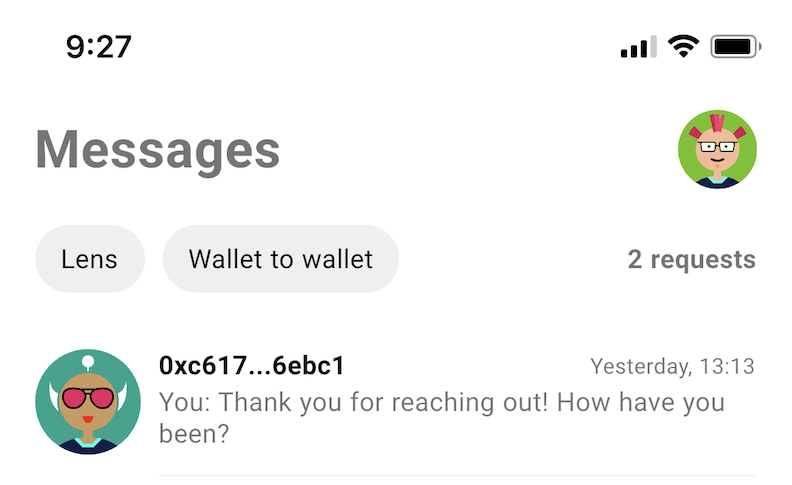Filter conversations using conversation IDs and metadata
With XMTP, a conversation is a set of messages sent between two blockchain account addresses. Two addresses can have multiple ongoing conversations.
You can choose to assign a conversation ID and metadata to a conversation to use as conversation filters in your app.
Use this tutorial to learn how to use conversation IDs and metadata to filter conversations in your app.
Before we get started, here are some key points about conversation IDs and metadata:
Conversation IDs and metadata are not required.
Conversation IDs are not cryptographically verifiable.
Using conversation IDs affects the user experience in certain apps built with XMTP, so implement them only if you have a strategic need to filter conversations.
For example, when you set an ID for a conversation between two users, if they are having conversations originating from contexts with different conversation IDs, they may see multiple conversations between their addresses. To learn more about this scenario and how to address it, see Label conversations.
Conversation IDs are different from content types. Using a custom content type does not require that you use conversation IDs.
Use cases
You can use conversation IDs and metadata to filter conversations by:
A message type
Filter to display only conversations that are notifications or alerts, for exampleA subject line
Filter to display only conversations with a specific subject line, as in emailAn NFT
Filter to display only conversations about an NFT, such as price negotiations or shipping instructionsAn app
Filter to display only conversations created by a specific app
Example implementations
Here are examples of conversation filters implemented in a few apps built with XMTP:
Following and Other in the Buttrfly app:

Following and Requested in the Lenster app:

Lens, Wallet to wallet, and requests in the Orb app:

Set a conversation ID
Set the conversationId when creating a conversation. conversationId values are private and encrypted.
As a best practice, start your conversationId with a domain that is unique to your app to help avoid collisions between your app and other apps on the XMTP network.
This example sets mydomain.xyz/notif as the conversationId when creating a conversation with recipient address 0x3F11b27F323b62B159D2642964fa27C46C841897:
// Start a scoped conversation with ID mydomain.xyz/notifconst conversation1 = await xmtp.conversations.newConversation( '0x3F11b27F323b62B159D2642964fa27C46C841897', { conversationId: 'mydomain.xyz/notif', })This conversationId indicates that these conversations are notification messages created by mydomain.xyz, for example. The mydomain.xyz/notif conversation ID can then be used to display only notification messages created by the app.
Set conversation metadata
In addition to setting a conversation ID when creating a conversation, you can set metadata to use as an additional filter or to assign useful context to the conversation. Conversation metadata is private and encrypted.
This example sets mydomain.xyz/message as the conversationId, indicating that these conversations are messages. In addition, the example sets a conversation metadata nickname value to example.
You can then use this conversation ID and metadata to display only messages created by your app and surface a conversation label based on the nickname value, for example.
// Start a scoped conversation with ID mydomain.xyz/message and add some metadataconst conversation2 = await xmtp.conversations.newConversation( '0x3F11b27F323b62B159D2642964fa27C46C841897', { conversationId: 'mydomain.xyz/message', metadata: { nickname: 'example', }, })Filter conversations by ID and metadata
Now that you've set a conversation ID and metadata, you can use them to filter conversations in your app.
Get all of the conversations, as shown in lines 1-2.
Filter by the domain value in your
conversationId,mydomain.xyz/for example, to return only conversations created by your app, as shown in lines 3-8.You can further filter by the rest of the
conversationIdand metadata. For example, filter bynotifto display only notification messages, as shown in lines 10-14.You can also separately filter by
messageand use the metadatanicknamevalue as needed in your app, as shown in lines 15-18.
// Get all the conversationsconst conversations = await xmtp.conversations.list()// Filter for conversations from your applicationconst myAppConversations = conversations.filter( (convo) => convo.context?.conversationId && convo.context.conversationId.startsWith('mydomain.xyz/'))for (const conversation of myAppConversations) { const conversationId = conversation.context?.conversationId if (conversationId === 'mydomain.xyz/notif') { await conversation.send('notif') } if (conversationId === 'mydomain.xyz/message') { await conversation.send('message') console.log(conversation.context?.metadata.nickname) }}Learn more
To learn about how a Lens app uses and filters by a conversation ID, see Build key XMTP chat features in a Lens app.
To learn more about conversation topics, see XMTP V2 topics and message presentation flow.